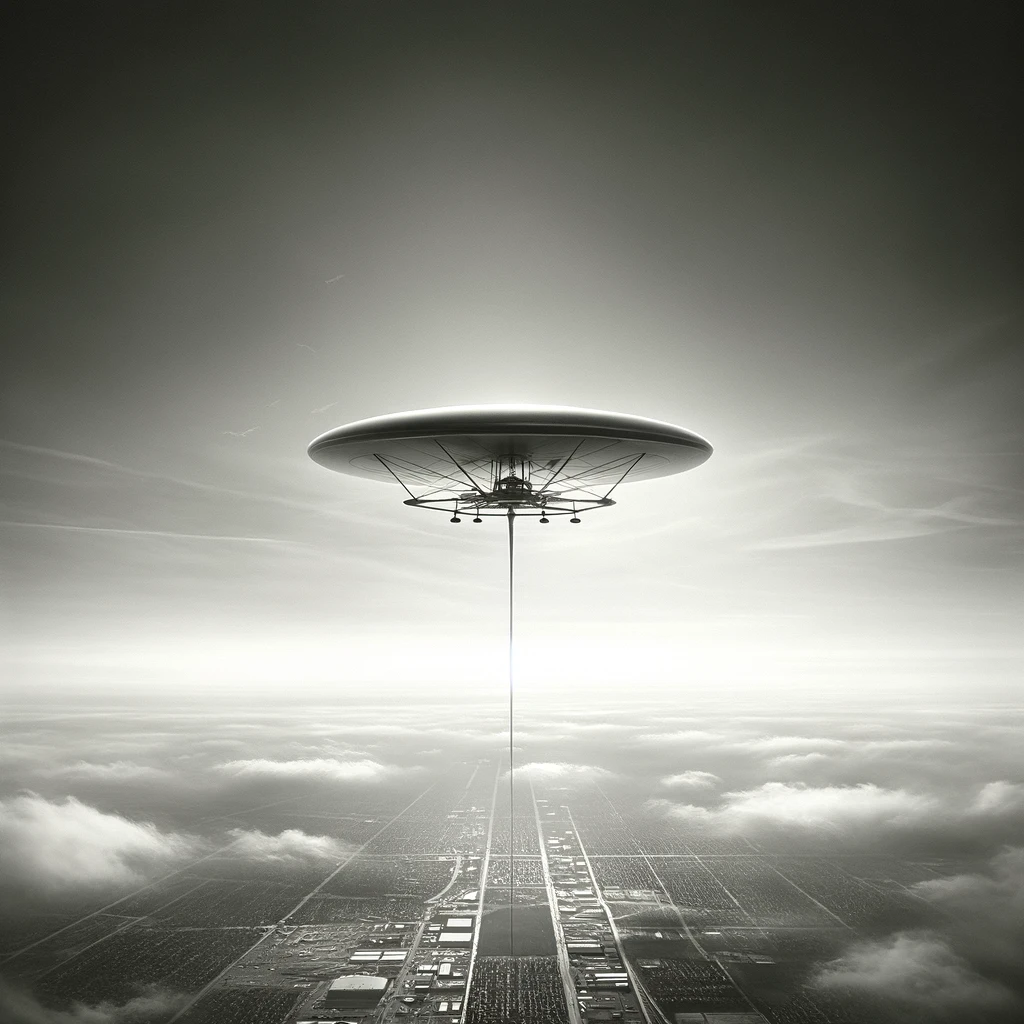The Discopter

Alexander George Weygers led a fascinating life marked by a deep connection to art, engineering, and a desire for independence. Born in the early 1900s in Java, he was introduced to both the arts and practical skills by his parents. After studying mechanical engineering and naval architecture in Holland, he moved to the United States with his wife, eventually settling in Seattle.
Tragically, he experienced the loss of both his wife and child in childbirth, which catalyzed his transition into a prolific artist. Immersing himself in sculpture, he found solace and expression in his work, notably creating the poignant piece “Morning” as a tribute to his lost family.
Alexander Weygers, known for his versatile talents and contributions across various fields, is most famously associated with a single patent – the “Discopter.” This patent, filed on January 1, 1944, and granted on June 5, 1945, was for a vertical liftoff aircraft that closely resembled what later came to be known as a “flying saucer.” The patent number for the Discopter is US2377835. Weygers’ innovative design was acknowledged to have served as a prototype and inspiration for other similar disc-shaped and hovering aircraft developed subsequently.
Despite the uniqueness of the Discopter patent, Weygers’ repertoire of skills and contributions extended far beyond this single invention. The Discopter remains his most notable patented work, with detailed plans at one point submitted to various branches of the U.S. Military, though the wartime period resulted in a delay in its potential development.
In his artwork and conceptualizations, Alexander George Weygers envisioned a futuristic world where UFO (Unidentified Flying Object) travel was prevalent. This vision stemmed from his innovative ideas in aviation and his fascination with futuristic technology. The Discopter resembled the stereotypical depiction of a flying saucer, leading some to consider it an early prototype of a UFO.
Weygers’ vision for UFO travel extended beyond mere transportation; it encompassed a reimagining of societal and urban landscapes. He depicted scenes of cities with large cruise ship-like UFOs hovering above, suggesting a world where these craft were integral to daily life and travel. His drawings and designs often showcased a blend of imagination and practical engineering principles, reflecting his belief in the potential for unconventional aircraft designs to revolutionize transportation.
While Weygers’ UFO concepts may have seemed far-fetched at the time, they reflect his forward-thinking approach to innovation and his willingness to explore unconventional ideas. Despite facing challenges in realizing his inventions during his lifetime, his visionary artwork continues to inspire discussions about the future of aviation and space travel.
Despite his visionary ideas, he faced setbacks in realizing his inventions, with the lack of a practical power source hindering their development. Nevertheless, Weygers remained undeterred, continuing to live according to his principles of autonomy and creativity, even as he retreated from mainstream society to live off the grid in Carmel Valley, California.
Weygers pursued various artistic disciplines with fervor, studying under renowned sculptors and becoming proficient in photography and blacksmithing. Despite his talents, he eschewed fame and commercial success, choosing instead to create for personal fulfillment and the enjoyment of friends and family. His ethos of self-sufficiency extended beyond art, as he built his own house and crafted tools from recycled materials, embodying a sustainable and minimalist lifestyle.
Throughout his life, Weygers served as a teacher, sharing his skills and philosophy with others who sought to learn from him. His legacy endures not only in his artwork but also in the ethos of self-reliance and artistic pursuit that he exemplified. Though he passed away in 1989, Weygers’ influence continues to inspire artists and innovators, reminding them of the value of living authentically and embracing creativity without constraint.


